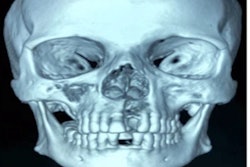Dear Imaging Insider,
When it comes to the accuracy of digital scans for complete onlay restorations, preparation design and the type of intraoral scanner used to capture the images matter, according to a study recently published in the Journal of Prosthetic Dentistry. Read more in our Insider Exclusive.
Also in the Imaging Community, computed tomography (CT) aided in the diagnosis of an unusual case of aseptic necrosis of the ramus lower jaw, which developed in a man who experienced midface trauma caused by a workplace fall. Clinicians should be aware of post-traumatic aseptic necrosis, which causes bone tissue death due to a lack of blood supply. The timing, technique, and strategy used can affect patient outcomes, according to the case report.
Is a surgery-free way to remove third molars coming soon? A 3D-guided microwave ablation, or microablation, procedure removed third-molar tooth buds in pigs in minutes, according to a study recently published in the Journal of Oral and Maxillofacial Surgery. Microablation, a method commonly used to treat tumors, could be a potentially less invasive alternative to traditional wisdom tooth extractions. Later this year, the procedure is expected to be tested in human clinical trials.
In other news, a recent study in BDJ Open compared the accuracy of 12 common 3D printers used in dentistry to determine whether a higher price equates to better quality. Check out our article to find out which printers came out on top.
Finally, imaging aided in the diagnosis of a 26-year-old man's very unusual infratemporal fossa abscess that developed in the lateral pterygoid, a masticatory muscle, following a wisdom tooth extraction, according to a recently published case report. Researchers believe this is the second reported case of a lateral pterygoid abscess.




















